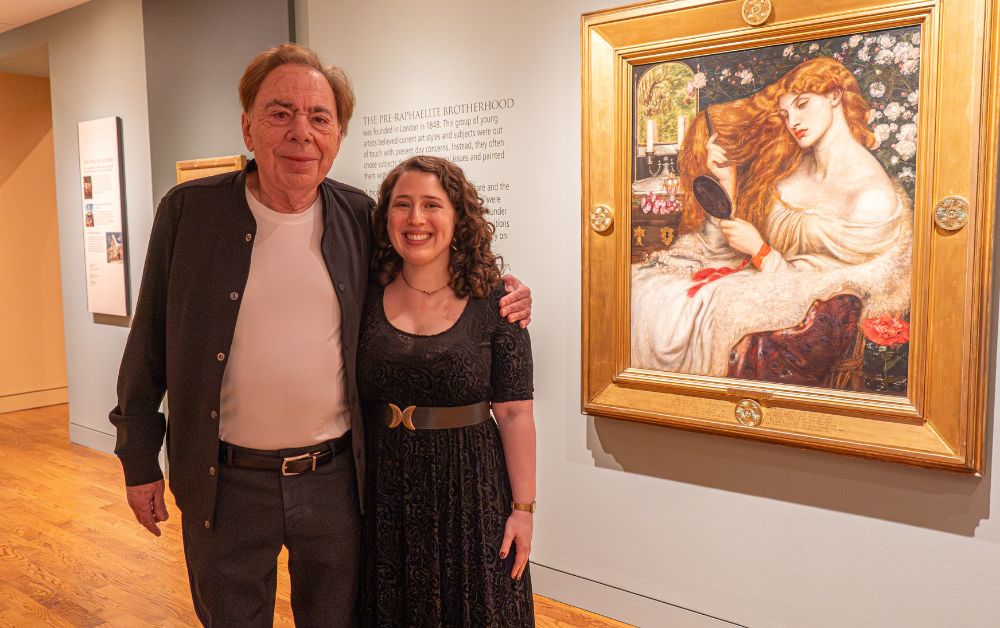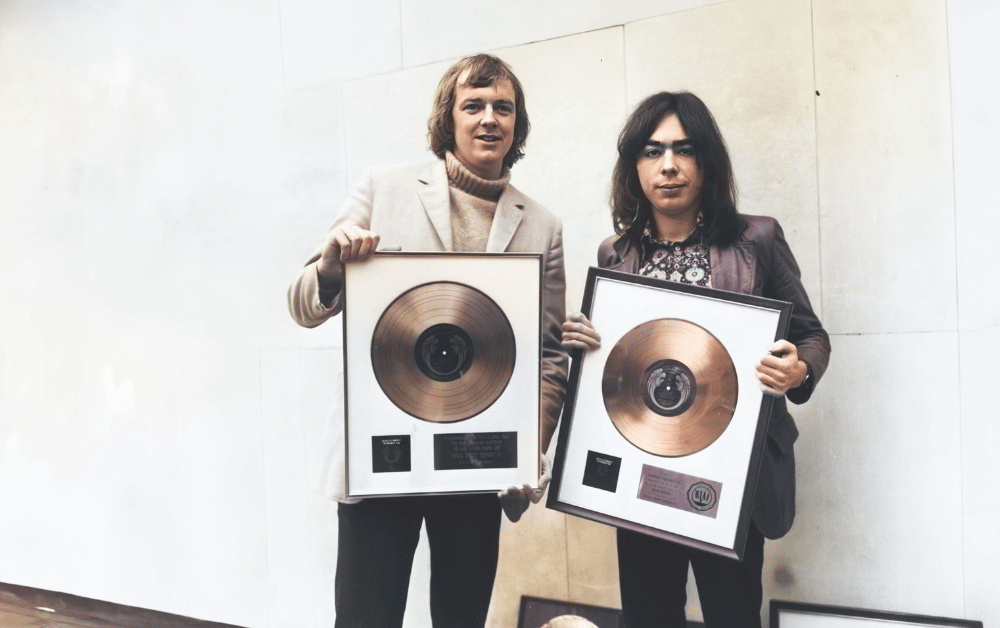Following the opening night of the North American tour of "Phantom of the Opera" at Baltimore's Hippodrome Theatre, Andrew made a detour to a special event at Wilmington's Delaware Art Museum to discuss his lesser-known passion: Pre-Raphaelite art.
The Delaware Art Museum is rich in Pre-Raphaelite works thanks to a transformative 1935 gift by Samuel and Mary Bancroft: a wealthy 19th-century industrialist couple who bought Pre-Raphaelite paintings, particularly works by Dante Gabriel Rossetti.

The Pre-Raphaelite rebels
The Pre-Raphaelites started as rebels in 1848, rejecting what they saw as the overly polished art of the Renaissance period. Instead, they looked back to mediaeval paintings, with their sharp lines and rich colours.
However, by the early 1900s, especially after the First World War, their romantic, emotionally intense style had fallen completely out of fashion across Europe.
Andrew’s fascination with Victorian artists dates to his teenage years in the early 1960s at a time when such art was widely considered unfashionable. Whilst his peers rebelled in more conventional ways, a young Andrew possessed an eye for artwork that nobody else wanted and fell for the moody, lush paintings of the previous century.
“Like all kids, you’re a bit of a rebel,” he said in conversation with curator Sophie Lynford at Wilmington's Delaware Art Museum event. “So, with the art establishment saying that Victorian art was rubbish, there was a group of us who thought, ‘No, there was some wonderful architecture. There are some wonderful artists.’”
He recounted asking his grandmother for £50 to purchase "Flaming June" by the then-obscure artist Frederic Leighton. Her response was unequivocal: "I will not have Victorian junk in my flat!"
She was not alone in her appraisal of this artistic movement: there are tales of Pre-Raphaelite masterpieces being thrown away in demolition dumpsters, as well as dealers buying the paintings for the value of their frames.
A Victorian revival
As the 1960s progressed, attitudes towards Victorian culture were beginning to shift in England. The magnificent Victorian Euston train station of 1837 was demolished in 1961 and replaced with a modern building that is widely despised to this day. The controversy sparked renewed interest in Victorian preservation and art, and finally, Andrew found himself in good company when another future music icon, Led Zeppelin guitarist Jimmy Page, who also developed a passion for Pre-Raphaelite paintings. Perhaps there is a link between their shared interest in collecting art from this period and their music, with both exploring themes of myth, romance, and melodrama.
Taylor Swift
Taylor Swift also appears to be somewhat obsessed with Shakespeare's tragic character with her new album "The Life of a Showgirl". The cover art shows Swift partially submerged in water with only her face above the surface, which may be a nod to a famous Pre-Raphaelite work depicting Ophelia by John Millais. The album also features a track "The Fate of Ophelia."
Did Andrew have any influence on Taylor? It is very possible Andrew may have played a role in Swift's interest when she had lunch at his home surrounded by pieces of his Pre-Raphaelites art collection.
Andrew believes "Ophelia was a fairly minor figure in 'Hamlet,' but she resonated with the Victorians a lot because she was a sad, mad woman. They really related to her story and, indeed, rather embellished it. It became the cult of Ophelia." "Ophelia was probably the most painted legend in Victorian art. I must have half a dozen versions!”

Find out More
This was a Box Five Club Exclusive
Members of The Box Five Club had access to this story before anybody else.
By signing up, you’ll be among the first to receive exclusive content, special announcements, and behind-the-scenes updates, delivered straight to your inbox, as well as gaining access to the exclusive Box Five store. Join now and stay connected to all things Andrew Lloyd Webber!


A First Look at New Production Photos from the Phantom of the Opera North American Tour

A First Look at New Production Photos from the Phantom of the Opera North American Tour
A First Look at New Production Photos from the Phantom of the Opera North American Tour
A First Look at New Production Photos from the Phantom of the Opera North American Tour


Joseph and the Amazing Technicolor Dreamcoat is Now on Yoto!

Joseph and the Amazing Technicolor Dreamcoat is Now on Yoto!
Joseph and the Amazing Technicolor Dreamcoat is Now on Yoto!
Joseph and the Amazing Technicolor Dreamcoat is Now on Yoto!


Sam Ryder to Headline Tim Rice and Andrew Lloyd’s Webber’s Jesus Christ Superstar at The London Palladium Next Summer

Sam Ryder to Headline Tim Rice and Andrew Lloyd’s Webber’s Jesus Christ Superstar at The London Palladium Next Summer
Sam Ryder to Headline Tim Rice and Andrew Lloyd’s Webber’s Jesus Christ Superstar at The London Palladium Next Summer
Sam Ryder to Headline Tim Rice and Andrew Lloyd’s Webber’s Jesus Christ Superstar at The London Palladium Next Summer


Everything You Need to Know About Jesus Christ Superstar

Everything You Need to Know About Jesus Christ Superstar
Everything You Need to Know About Jesus Christ Superstar
Everything You Need to Know About Jesus Christ Superstar


Brand New album of Evita Released Worldwide On All Streaming Platforms

Brand New album of Evita Released Worldwide On All Streaming Platforms
Brand New album of Evita Released Worldwide On All Streaming Platforms
Brand New album of Evita Released Worldwide On All Streaming Platforms


A brand-new production of Andrew Lloyd Webber's CATS to play at Regent's Park Open Air Theatre













